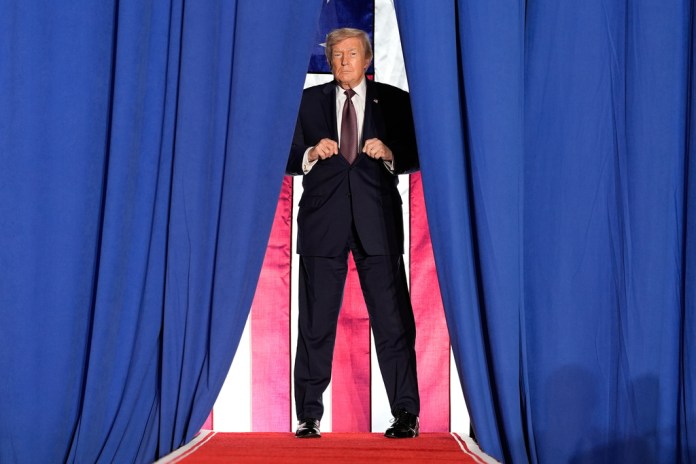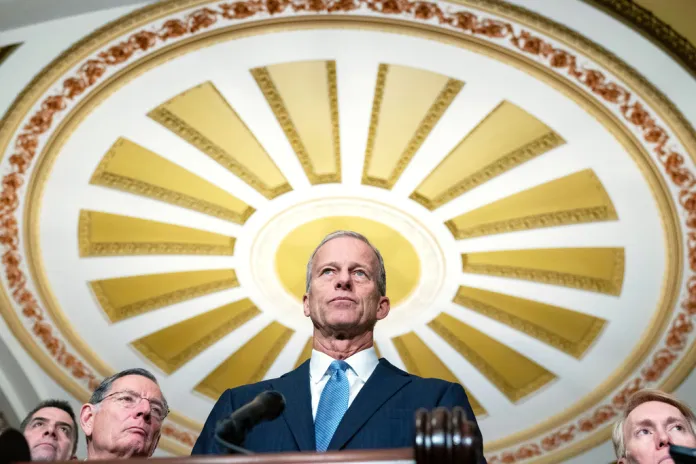Economy added 114,000 jobs in July: The key facts and figures – Washington Examiner
The latest report from the Bureau of Labor Statistics reveals that the U.S. economy added 114,000 jobs in July, falling short of investors’ expectations of around 176,000. Additionally, the unemployment rate has risen to 4.3%, compared to a previous steady rate of 4.1%. Robert Frick, a corporate economist, characterizes this data as alarming, suggesting that the job growth trend may not be stable.
This unexpected slowdown in job growth presents challenges for President Joe Biden, especially as he faces high disapproval ratings regarding his economic management. Democrats are under pressure to improve public perception before the upcoming election.
The Federal Reserve is likely to view this job growth deceleration as a sign that its interest rate hikes designed to curb inflation are starting to affect economic momentum. A cooling labor market could prompt quicker interest rate cuts, with investors anticipating the first cut as soon as September.
While it’s crucial not to overinterpret individual job reports, the overall trend shows a decline in the three-month moving average for job gains to 170,000. To maintain current unemployment levels, the economy requires about 110,000 new payroll jobs monthly, but varying estimates suggest this figure might be as high as 200,000 when accounting for immigration.
The report has raised recession concerns, highlighting that an increasing unemployment rate can signal an impending economic downturn. This is underscored by the Sahm Rule, indicating a recession starter based on the GDP trend.
sectors such as leisure and hospitality show a recovery trend, reaching just above pre-pandemic employment levels from February 2020. However, challenges remain in stabilizing job growth and managing public and investor expectations as the economic landscape evolves.
Economy added 114,000 jobs in July: The key facts and figures
The economy added 114,000 jobs in July, and the unemployment rate rose to 4.3%, the Bureau of Labor Statistics reported Friday. Investors had expected roughly 176,000 new jobs and for the unemployment rate to hold steady at 4.1%.
The interpretation
“It’s a scare, I think is the headline,” Robert Frick, corporate economist at Navy Federal Credit Union, told the Washington Examiner. “The job market has been drifting into what we thought would be a nice model of about 150,000, 160,000 jobs a month … but whether it’s an aberration or not, hard to say.”
What it means … for Biden
The report is some unwelcome news for President Joe Biden, who is suffering from high disapproval ratings related to his handling of the economy. Democrats and presumptive presidential nominee Kamala Harris are running low on time to turn around voter perceptions of the party’s handling of the economy before the election.
Friday’s report shows a slowdown in jobs growth. The last time the unemployment rate was as high as it is now was October 2021.
What it means for … the Fed
The Federal Reserve is likely to interpret the slower job growth in July as an indication that its efforts to tame inflation via interest rate hikes are beginning to affect the momentum in the economy.
The report does show some cooling in the labor market. If subsequent reports continue to show employment growth slowing, or reversing course, it could accelerate the pace of rate cuts. Investors expect the first rate cut to come in September.
The underlying reality
It is important not to read too much into any one jobs report. The payroll numbers bounce around from month to month and are revised in subsequent reports.
Instead, it is helpful to look at the trend. The three-month moving average of job gains slowed to 170,000.
Roughly 110,000 new payroll jobs are needed each month to keep unemployment from rising, according to the Federal Reserve Bank of Atlanta. Note, though, that a separate estimate that takes into account the full extent of recent immigration puts the number as high as 200,000.
Prime-age employment, relative to the overall population, is strong by historical standards.
Recession watch
The unemployment rate, taken from the jobs report’s household survey, is still low by historical standards, but it is creeping up.
Recessions entail a rising unemployment rate.
Friday’s data suggest that the United States has triggered one major recession indicator — when the three-month moving average of the unemployment rate rises half a percentage point relative to its minimum point over the past year. This indicator, known as the Sahm Rule, signaled the start of all post-war recessions.
Industries to watch
The leisure and hospitality sector is just above the levels of employment it reached in February 2020, right before restaurants and bars were forced to shut down across the country.
Construction employment has remained robust, even as the housing market has taken a massive hit over the past few years as mortgage rates have soared alongside the Fed’s rate hikes. That’s in part because of a huge backlog of construction of multifamily housing over recent months. Economists will watch closely for any sign of slowing hiring in construction.
Unemployment rates by race/ethnicity
The household survey also includes unemployment rates by race and ethnicity. Rates for all groups neared record lows in the past few years but have drifted up recently.
" Conservative News Daily does not always share or support the views and opinions expressed here; they are just those of the writer."




